A beautifully rufous hummingbird with a stunning iridescent orange throat.
Meet Allen’s Hummingbird
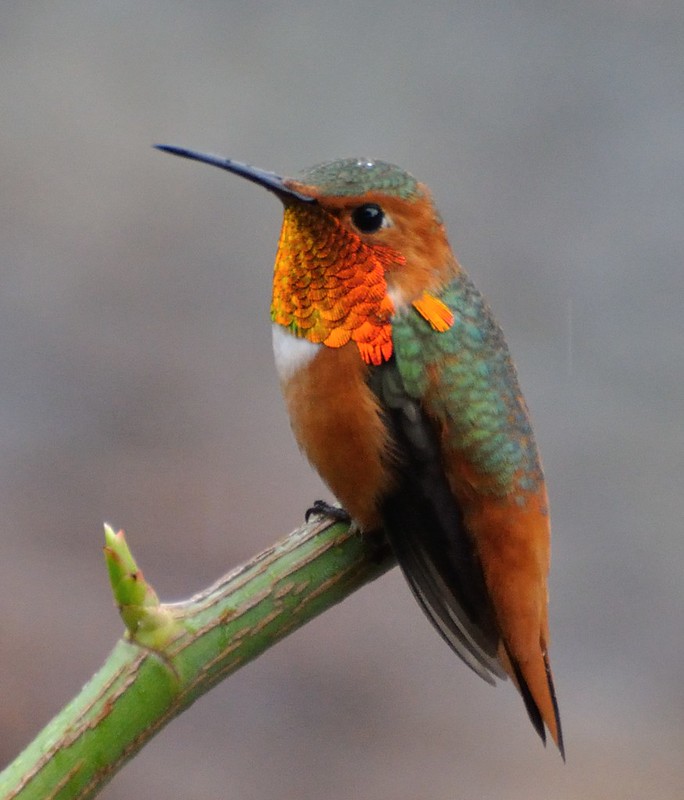
Photo Courtesy of m.shattock / CC BY-SA 2.0
Allen’s hummingbird (Selasphorus sasin) is a species of hummingbird that is one of seven species in the genus Selasphorus. One of the smallest hummingbirds in North American measures only 7.5 to 9 cm long weighing in at 3 grams. The male has a glossy green or bronze-green back and forehead, with rust-colored (rufous) sides and rump (lower back). In some males, the rump is orange. The male’s throat is also an iridescent orange-red or copper-red, with elongated feathers projecting slightly to the sides. His orange, pointy tail has dark tips. The outermost tail feather is very narrow. His wings are dusky-colored and his chest is white. The male has a white spot behind his black eyes.
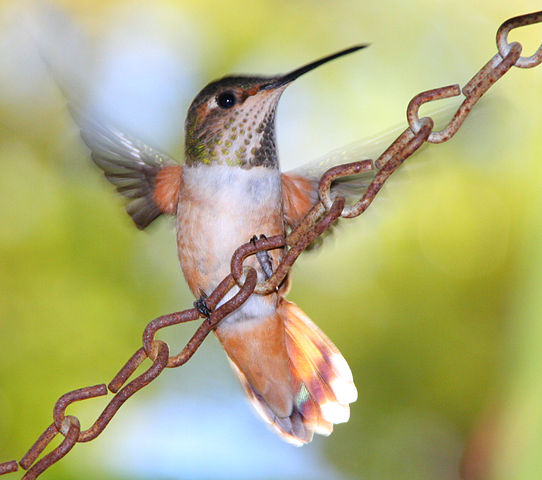
Photo Courtesy of Paul McGuire / CC BY-SA 2.0
The female looks similar to the male but lacks the male’s flashy throat patch, instead her throat is speckled. A few reddish throat feathers may be seen. Other than that, her chin, throat, and chest are dull white. Her upper plumage is mostly green except for the rufous-colored, white-tipped rounded tail. Her under tail feathers are pale cinnamon.
Only the female’s tail feathers are tipped white.
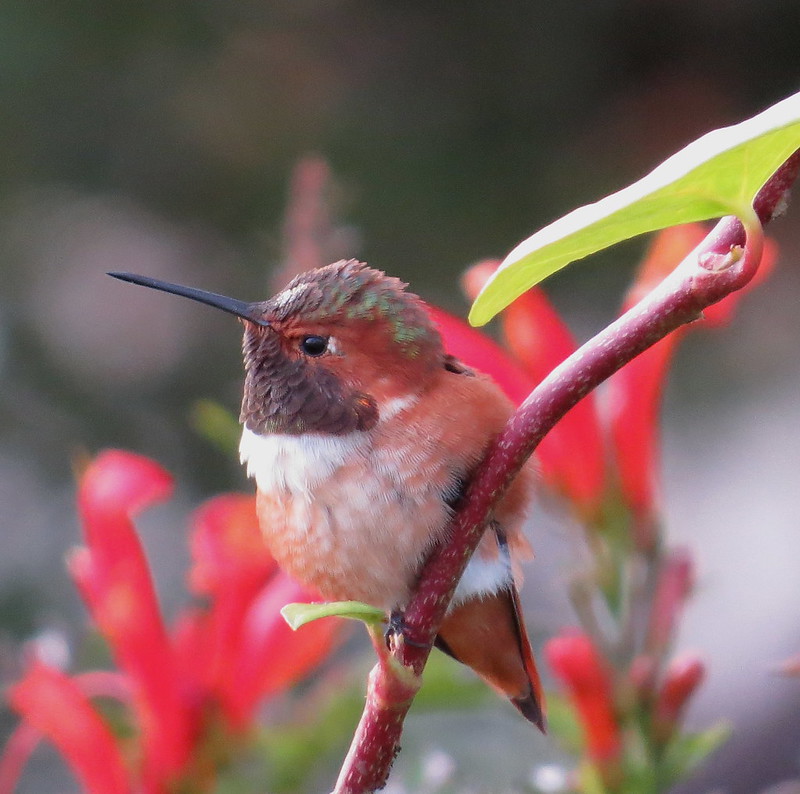
Photo Courtesy of Kaaren Perry / CC BY 2.0
The breeding range of Allen’s hummingbird is continuously distributed along a narrow strip along the Pacific Coast, from southwest Oregon to southern California (Long, 1997). Their migratory paths may go through southern Arizona as well as Nevada, along the Gulf Coast from Texas to Louisiana, and western Washington.
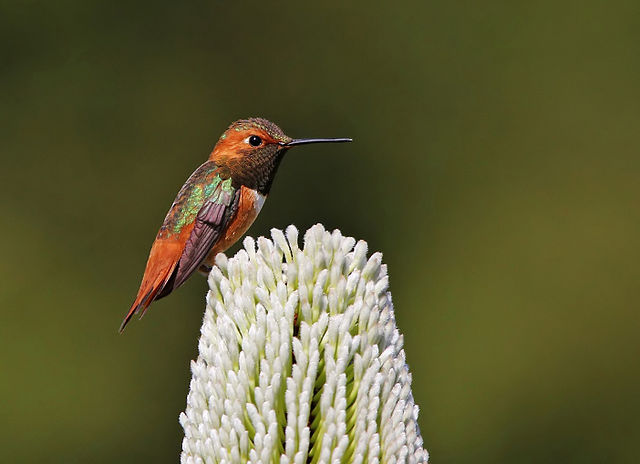
Photo Courtesy of Shravans14 / CC BY-SA 4.0
The Allen’s Hummingbird frequents scrubland, coastal chaparral, and bushy slopes, and can be seen in open woodland and forest edges.
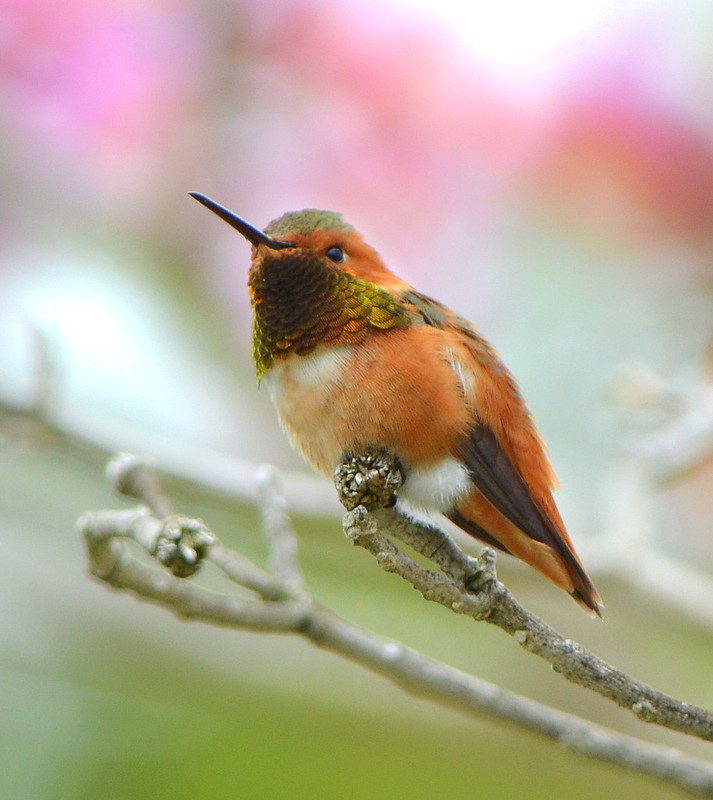
Photo Courtesy of Tracie Hall / CC BY-SA 2.0
This species feeds on nectar from flowers, both from native plant species and introduced ones. However it will also take insects on the wing.
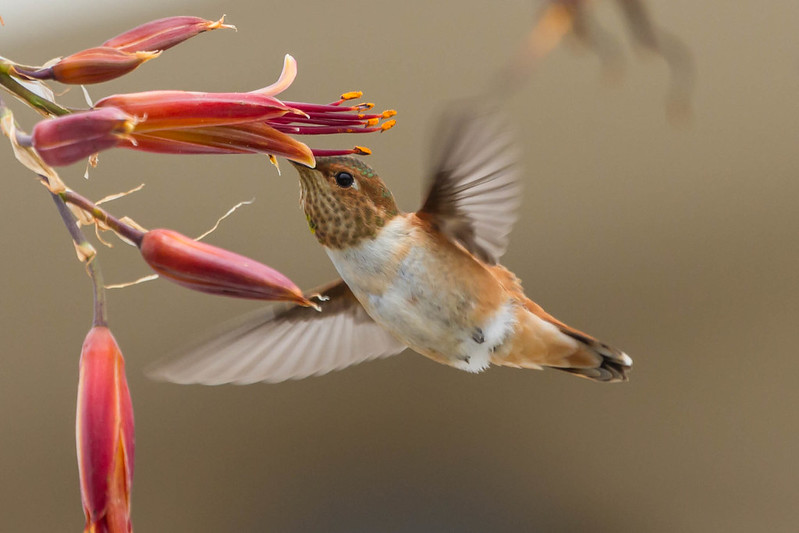
Photo Courtesy of Dawn Beattie / CC BY 2.0
The Allen’s Hummingbird breeds from February through to July. The female builds the nest before mating and finishes it after the act. The tiny cup-shaped nest is made with moss, lichens, plant down, animal hair, spider webs, and other fine material. It is built outside the male’s territory, and placed on a branch of a tree, between 50 centimeters and 15 meters above the ground. She lays two eggs and incubates alone during 16-22 days. The female performs all the nesting duties and protects, broods, and feeds the chicks until they leave the nest. She feeds them by regurgitating food from her crop. The chicks fledge about three weeks after hatching and are immediately independent.
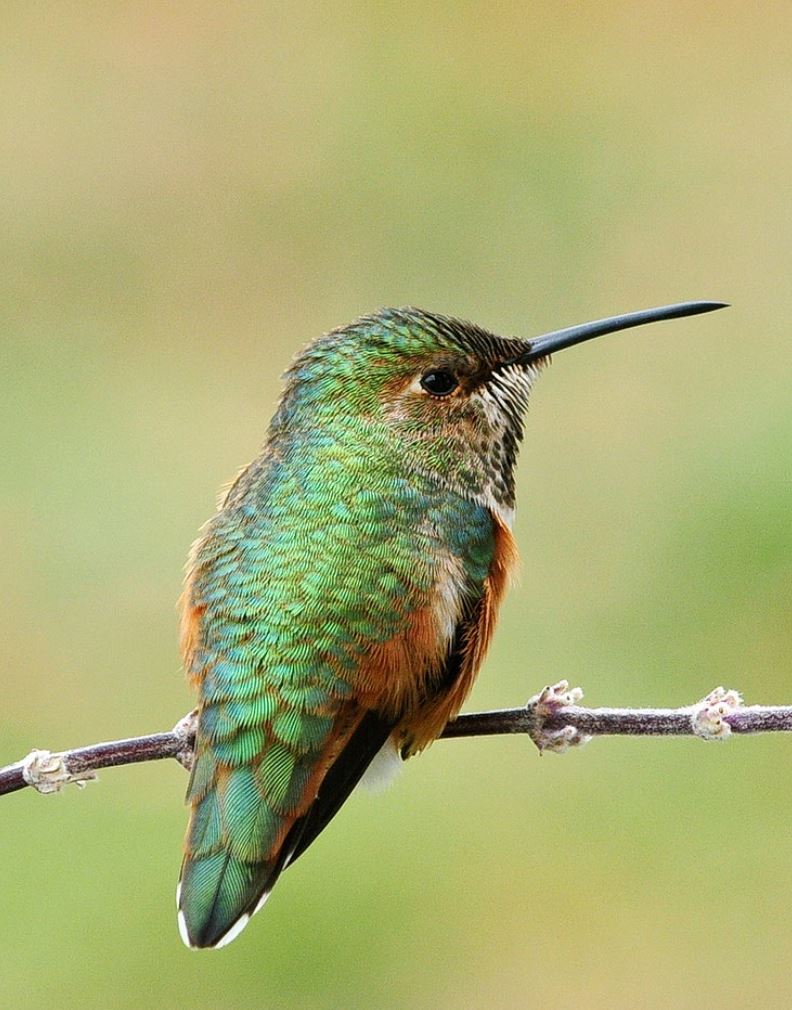
Photo (cropped) Courtesy of tdlucas5000 / CC BY-SA 2.0
The Allen’s Hummingbird has a restricted range, but the species is fairly common in its habitat in canyons and scrub habitats along the California coast. Potential threats include habitat loss, use of pesticides, and an extension of invasive plant species.
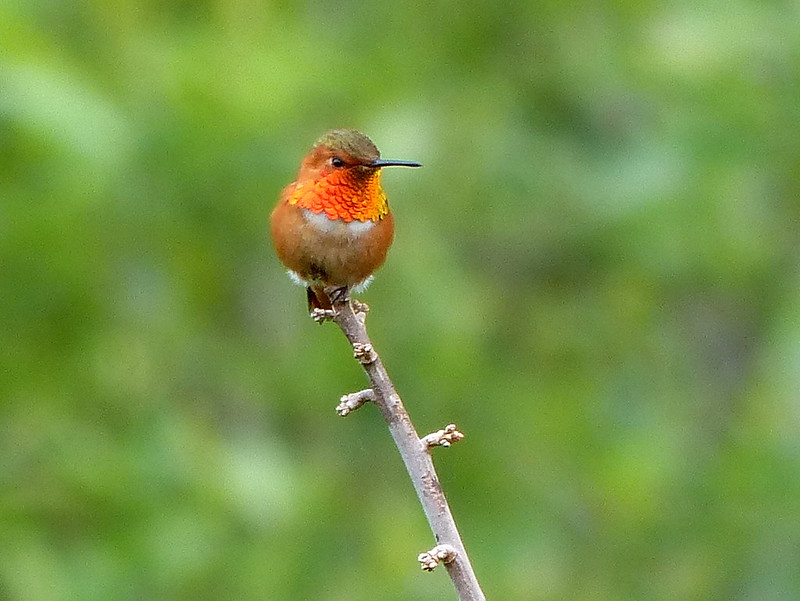
Photo Courtesy of bgwashburn / CC BY-SA 2.0
Watch and listen to this bird right here below:




